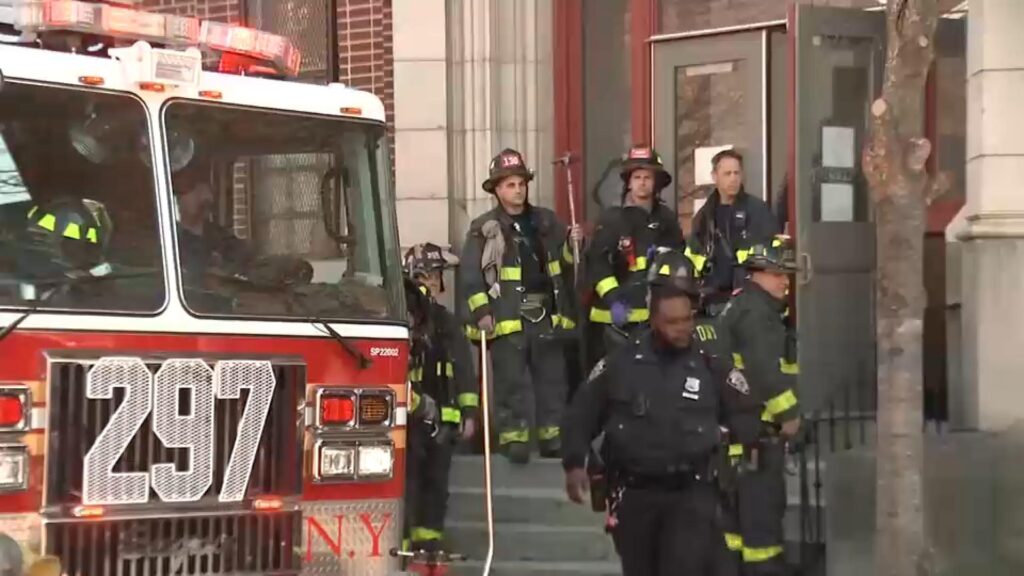Table of Contents
- Incident Overview and Immediate Response at College Point School
- Medical Treatment and Condition of Injured Individuals
- Investigation into Causes and Security Lapses
- Recommendations for Enhancing Safety and Emergency Preparedness
- Future Outlook
Incident Overview and Immediate Response at College Point School
On a typical school day disrupted by unforeseen events, panic ensued at College Point School when a substance believed to be pepper spray was inadvertently released within the premises. The incident led to immediate discomfort and respiratory distress among students and staff, prompting swift action from the school’s emergency response teams. First responders, including on-site nurses and security personnel, quickly initiated protocols to evacuate and ventilate affected areas, ensuring the safety and well-being of everyone present.
Emergency measures implemented promptly included:
- Rapid assessment and segregation of exposed individuals
- Deployment of medical aid and monitoring for respiratory symptoms
- Coordination with local medical facilities for possible hospital transfers
- Communication with parents and guardians to keep them informed
Medical Treatment and Condition of Injured Individuals
Emergency medical teams responded swiftly to the chaotic scene following the pepper spray incident, setting up triage areas to assess and treat the affected individuals. Many suffered from respiratory distress, eye irritation, and skin burning sensations typical of chemical exposure. Paramedics administered oxygen therapy and decontamination procedures, including thorough irrigation of eyes and skin, which helped alleviate symptoms in most cases. A number of patients were transported to nearby hospitals for advanced care, particularly those experiencing severe respiratory issues or allergic reactions.
Authorities confirmed that more than 30 people received medical attention, with injuries ranging from mild to moderate. The affected individuals included students, teachers, and staff members who were on-site during the incident. Medical professionals emphasized the importance of prompt treatment to prevent long-term complications. Hospitals have reported stable conditions for all admitted patients, and no fatalities have been recorded. The ongoing investigation is also looking into whether any preventive measures could have minimized medical risks during the event.
- Common symptoms treated: eye irritation, coughing, difficulty breathing
- Medical interventions: oxygen administration, flushing of eyes and skin
- Hospital admissions: approximately 10 individuals for close monitoring
- Current patient status: stable and under observation
Investigation into Causes and Security Lapses
Authorities have launched a comprehensive inquiry into the circumstances that led to the widespread use of pepper spray at College Point School. Preliminary findings suggest a combination of inadequate supervision and failure to enforce standard security protocols may have contributed significantly to the incident. School officials reportedly overlooked critical warning signs and did not implement timely preventive measures, raising concerns about the overall safety culture on campus.
Investigators are currently focusing on specific security lapses that facilitated the unauthorized possession and deployment of the irritant. Key areas under scrutiny include:
- Access control weaknesses at entry points
- Insufficient staff training in emergency response
- Lack of clear communication channels during the crisis
- Failure in monitoring student behavior that could indicate unrest
Based on the ongoing probe, recommendations are expected to emphasize the urgent need for enhanced security measures and immediate staff retraining to prevent future occurrences. The school administration has committed to cooperating fully with the investigation to restore trust and ensure a safe learning environment.
Recommendations for Enhancing Safety and Emergency Preparedness
To prevent incidents similar to the recent pepper spray exposure, institutions must prioritize the implementation of comprehensive safety protocols. This includes the installation of clear emergency alert systems, regular safety drills tailored to chemical exposure scenarios, and easy access to first aid supplies specifically designed to address respiratory and eye irritants. Staff and students should also receive training on recognizing early signs of hazardous substance release and proper evacuation routes to minimize panic and injury.
Key strategies for boosting emergency preparedness include:
- Establishing rapid-response teams trained in chemical hazard containment and victim assistance
- Enhancing communication channels between school officials, local emergency services, and families
- Investing in better ventilation systems and air quality monitoring throughout campus buildings
- Conducting regular risk assessments to identify potential vulnerabilities in school security and safety infrastructure
Future Outlook
As authorities continue their investigation into the incident, the college and local officials have pledged to review safety protocols to prevent similar occurrences in the future. Students affected by the exposure are receiving medical attention, and counseling services have been made available. The college community remains focused on ensuring a safe and secure learning environment for all. Further updates will be provided as more information becomes available.Check Our Other Blogs
- StunGun – Your Trusted Source for Stun Guns, Laws, and Self-Defense Tips
- PepperSprayLaws – Your Trusted Resource for Pepper Spray Information
- StunGunLaws – Your Trusted Guide to Stun Gun Legality and Safety




